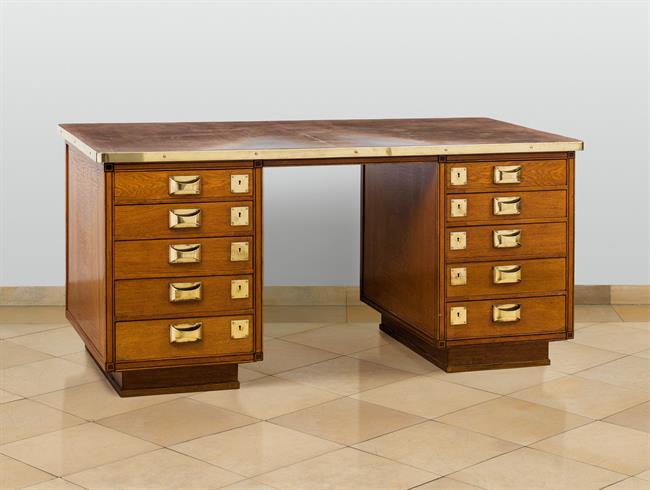 Desk
around 1912
Desk
around 1912
Robert Oerley
Vienna 1876 - 1945 ViennaRobert Oerley learned carpentry, and then studied at the Kunstgewerbeschule, while continuing his self-taught education (extended trip to Italy in 1898). He completed his apprenticeship as a carpenter with the journeyman's examination in 1892. From then on, he began to participate in the current discourse on the latest trends in architecture and to take a stand on it. Very early on, he dealt with problems in terms of formal language and construction that would become of more general interest later on. In an effort to meet modern purposes with completely new means of construction, he designed, for example, according to the patent system "Katona" (a material- and cost-saving construction method, in which emergency housing was also built), 1912, a family house and coffee house.
He took part in the competition for the Strauss-Lanner monument and was rewarded. He created interiors and his first houses, for the most part still for his own family. In addition to his architectural work, he also devoted himself to watercolor painting and drawing.
Oerley's main work is the former Luithlen Sanatorium (Vienna 8, Auerspergstraße 9, 1907-1908), a sanatorium for skin and venereal diseases, prompting his ranking among the most progressive architects in Vienna. The broad spectrum of his activities in the following years not only included various villa buildings, interior designs, furniture designs, monuments and tombs, but he also took part in several competitions for public tasks. In 1907 he became a member of the Secession and from then on was entrusted with the spatial concepts and designs for numerous of its exhibitions.
-
Desk around 1912
